Software development teams are under tremendous pressure to produce high-quality apps quickly in the fast-paced world of today. Many firms have started using Continuous Integration and Deployment (CI/CD) techniques to satisfy these expectations. The software development lifecycle has been changed by CI/CD, which has allowed teams to streamline their procedures, lower mistake rates, and deliver software upgrades more quickly and confidently. In this blog, we’ll examine the core ideas behind CI/CD, as well as its advantages and significant implementation strategies.
What is Continuous Integration (CI)?
Continuous Integration is a development practice that emphasizes frequent integration of code changes into a shared repository. Developers merge their code changes into a central version control system multiple times a day. This process allows the development team to detect and address conflicts or issues early on, ensuring that the codebase remains stable and functional.
Benefits of Continuous Integration
- Early Bug Detection: By integrating code changes frequently, CI enables early detection of bugs or integration issues, making it easier to identify and resolve them promptly. This results in a more stable and reliable codebase.
- Faster Development Cycles: CI helps accelerate the development process by reducing the time required for manual integration and bug fixing. Developers can focus more on writing code and less on managing complex merge conflicts, leading to faster delivery of features and enhancements.
- Collaboration and Communication: CI promotes better collaboration among team members as they work on integrating their changes continuously. It encourages regular communication and ensures that everyone is aware of the latest updates and developments.
What is Continuous Deployment (CD)?
Continuous Deployment extends the concept of CI by automating the process of deploying software changes to production environments. With CD, the entire software delivery pipeline is automated, from building and testing to deployment and monitoring. This approach enables organizations to rapidly deliver new features, bug fixes, and improvements to end-users.
Benefits of Continuous Deployment
- Faster Time-to-Market: CD eliminates manual deployment steps, reducing the time required to release new features or updates. It enables organizations to respond quickly to customer needs and market demands, gaining a competitive edge.
- Increased Reliability: Automated deployment processes reduce the risk of human error and ensure consistent deployments across different environments. This results in a more reliable and stable application for end-users.
- Rapid Feedback Loops: CD provides a feedback loop that allows teams to gather real-time insights on the performance and usability of their applications. This feedback helps in identifying and addressing issues promptly, improving the overall quality of the software.
Key Practices for CI/CD Implementation
- Automated Testing: Automated tests, such as unit tests, integration tests, and regression tests, are essential for validating code changes. Test suites should be run automatically as part of the CI/CD pipeline to ensure the stability and quality of the software.
- Continuous Integration Server: A CI server, such as Jenkins, GitLab CI, or CircleCI, automates the build and integration processes. It triggers builds, runs tests, and notifies the team about the status of each integration. This server acts as the central hub for managing the CI/CD pipeline.
- Infrastructure as Code: Infrastructure should be treated as code, utilizing tools like Docker and Kubernetes. Infrastructure provisioning and configuration should be automated to ensure consistency across different environments.
- Deployment Orchestration: Automated deployment tools, such as Ansible, Chef, or Kubernetes, streamline the process of deploying software changes to various environments. They ensure that the deployment is consistent, repeatable, and can be rolled back if necessary.
- Version Control and Branching Strategy: Effective version control, using tools like Git, is crucial for managing code changes and enabling parallel development. Establishing a branching strategy, such as GitFlow or trunk-based development, helps teams manage different code versions and ensures a smooth integration process.
- Continuous Monitoring and Feedback: Monitoring the application’s performance and user feedback is vital to ensure that the deployed changes meet expectations. Implementing tools for logging, error tracking, and performance monitoring allows for continuous feedback on the application’s health and user experience.
- Automated Build and Packaging: Automating the build and packaging processes ensures consistent and reproducible builds across environments. Build tools like Maven or Gradle, combined with containerization platforms like Docker, simplify the packaging and distribution of applications.
- Continuous Security and Compliance: Integrating security and compliance checks into the CI/CD pipeline helps identify vulnerabilities early in the development process. Automated security scanning, vulnerability assessments, and code analysis tools contribute to maintaining a secure and compliant software system.
- Continuous Learning and Improvement: CI/CD promotes a culture of continuous learning and improvement. Teams should regularly review and refine their CI/CD pipeline, identify bottlenecks or pain points, and seek ways to optimize and streamline their processes. This iterative approach fosters innovation and ensures that the development workflow evolves with the changing needs of the organization.
Modern software development now relies heavily on the methods of continuous integration and deployment. Organizations may improve collaboration, shorten development cycles, and deliver software updates more quickly, reliably, and securely by adopting CI/CD. Adopting CI/CD approaches will be even more important as technology develops in order to keep up with the rising needs of the software business.






